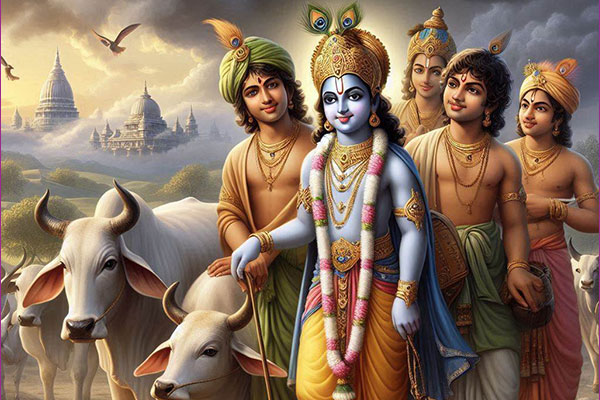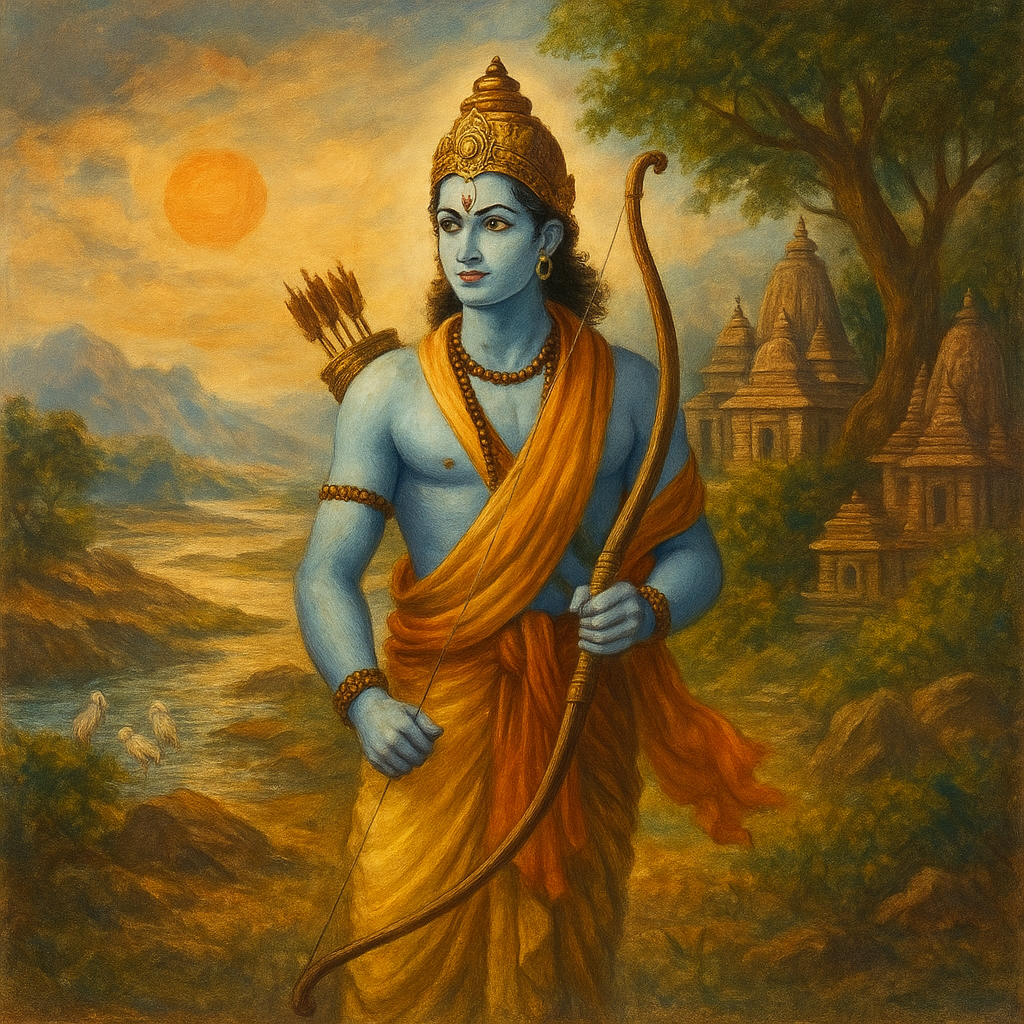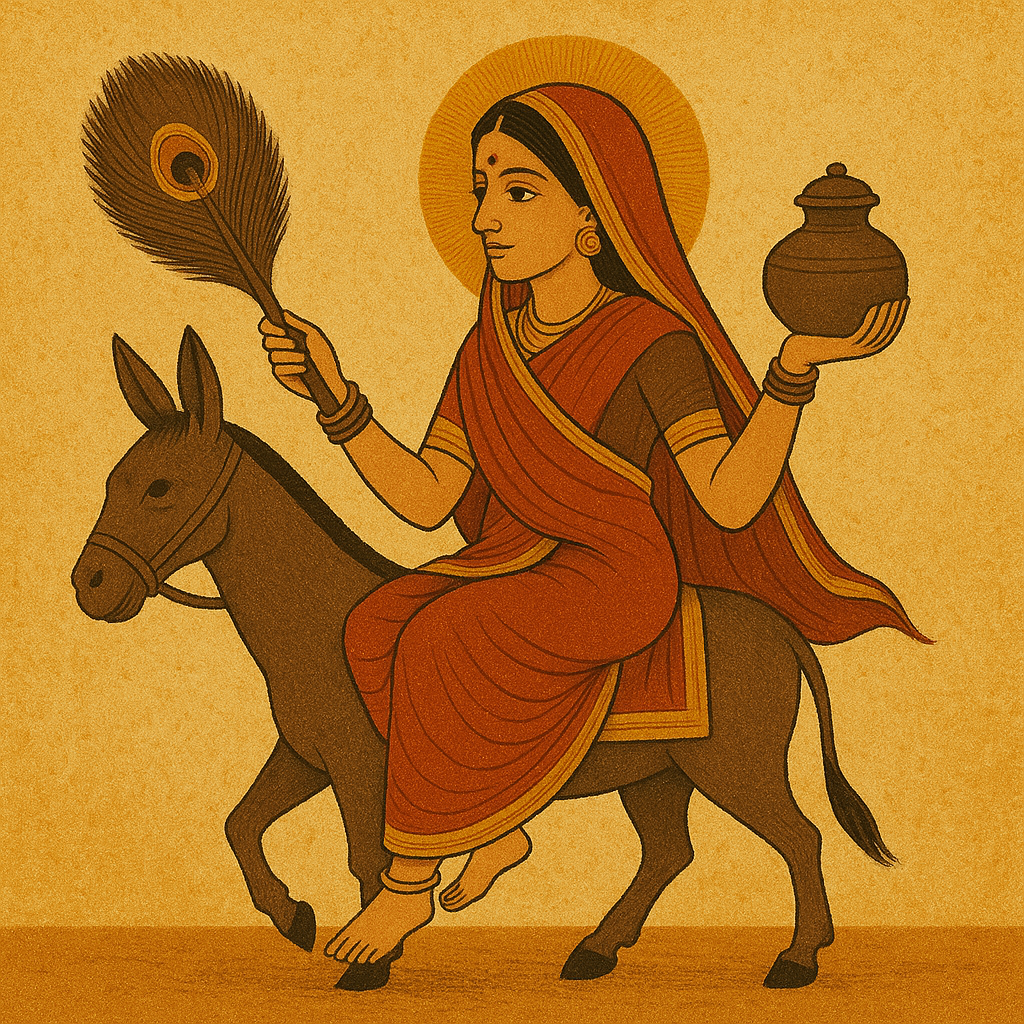
Gopashtami is a Hindu festival observed in northern India. It is dedicated to Bhagawan Krishna and commemorates the first time Krishna and his friends, known as the Gopas, were permitted to graze cows. Gopashtami is a widespread festival in Mathura, Vrindavan, and other Braj regions in India.
What is Gopashtami (Meaning) & Significance.
-&-Significance.jpg)
Gopashtami is a Hindu festival that celebrates Shri Krishna's transformation from a playful youngster to a serious cowherd, marking an important phase in his life. The term 'Gopashtami' is derived from 'Gopa,' meaning cowherd, and 'Ashtami,' which refers to the eighth day of the lunar month.
According to tradition, Gopashtami is observed on the eighth day of the bright half (Shukla Paksha) of the Kartik month (October-November). On this day, Shri Krishna, who was nurtured in the grazing community of Gokul, was given the job of caring for the cows for the first time. Gopashtami honors the holy relationship between cows and Krishna, who is sometimes represented as a heavenly cowherd (Govinda).

Cows are honored as symbols of abundance and devotion in Hindu culture; thus, the festival includes specific prayers and ceremonies devoted to them. Devotees wash and adorn cows, give them special food, and ask Krishna's blessings for wealth and protection. Gopashtami emphasizes the role of cows in agricultural and rural life, demonstrating Hinduism's strong connection to nature, animals, and spirituality.
When Is Gopashtami Celebrated In 2026? Date, Tithi & Muhurat
Gopashtami on Thursday, September 27, -2026
Ashtami Tithi Begins - 12:45 PM on Sep 26, -2026
Ashtami Tithi Ends - 03:17 PM on Sep 27, -2026
Gopashtami Katha (Story)
It is believed that on Gopashtami, Bhagawan Krishna became a skilled cowherd. On this day, Nanda Maharaja sent his children,
Bhagwan Krishna
and Bhagwan Balram, to herd cows. It was a celebration meant only for boys and men. However, Goddess Radha put on Bhagwan Krishna’s dhoti and garments and joined him. Bhagawan Krishna and his elder brother Balram went barefoot to Vrindavan.
According to Srimad Bhagawatam, Bhagawan Shri Krishna used to walk barefoot at the age of six, along with a herd of cows. He was delighted when the foot dust of cows fell on him. It is believed that his lotus feet purified the land of Vrindavan.
.jpg)
Nanda Maharaja had 900,000 cows, and Bhagawan Krishna identified and beckoned them by their names. Because of his affection, Bhagwan Krishna is also known as Govind or Gopal. Bhagawan Krishna used to apply Gauraj tilak on his forehead and show his affection for Gau seva. The people of the Braj region would make offerings and sacrifices to appease Bhagwan Indra and seek his blessings to receive substantial rains.
Once, Bhagawan Krishna, who was then a little boy, asked his father, Nanda, the purpose of making such offerings. He believed that appeasement should not be encouraged. Nanda and the Brijwasis seconded Bhagwan Krishna and stopped making the customary offerings to Indra Dev. However, their decision to discontinue the practice enraged Bhagwan Indra. To avenge the insult, he unleashed a torrential downpour, floods, and thunderstorms, which resulted in the loss of livestock and property. Bhagwan Krishna lifted the
Govardhan
mountain on his little finger, which acted as a protective umbrella. Bhagwan Indra accepted defeat on the eighth day and sought forgiveness from Bhagwan Krishna. Surbhi showered milk on Bhagwan Krishna and declared him as Govinda, i.e., the Bhagwan of the Cows.
Hence, the eighth day (Ashtami) came to be known as Gopashtami. Thus, Bhagwan Krishna emphasized Bhakti. He despised appeasement and believed that Bhakti should arise out of love and not fear.
Gopashtami Puja Vidhi

The ritual of worshipping cows on Gopashtami is like Govatsa Dwadashi. Devotees wake up early in the morning to clean and bathe cows. After cleansing, they apply tilak and sandalwood on the forehead of the cows. The cows' horns are painted with bright colors and decorated with jewelry and clothes. Rice, fodder, water, flowers, fruits, roli, sweets, incense sticks and jaggery are offered to the cows. Devotees prepare bhog prasad such as kheer, puri, semolina halwa and aloo ki sabzi.
Gopashtami Mantra
Gopashtami is a grand festival in Mathura, Vrindavan and other Braj areas. Devotees recite Hare Krishna Maha mantra and sing Damodarasthakam on Gopashtami.
The mantra as it appears in the oldest known scripture, the Kali-Santarana Upanishad, is as follows:
Hare Krishna Hare Krishna
Krishna Krishna Hare Hare
Hare Rama Hare Rama
Rama Rama Hare Hare
- Kali-Santarana Upanishad
Gopashtami honors Hindu culture's profound veneration for cows, which represent wealth and the spiritual relationship between people and environment. By celebrating Krishna's work as a cowherd, the festival encourages duty, care, and devotion. Gopashtami's rituals, such as scrubbing and feeding cows, emphasize the necessity of loving and safeguarding these gentle species, as well as reinforcing our connection to nature.
Gopasthami Festival Associated Products & Services
Gautran Daan

Buy Gautran Daan service to receive the blessings of Shri Krishna
Cow Donation (Gau Daan), Daan Dakshina or donation charity is one of the noblest acts according to Dharma.
Gau Puja & Seva
Gau Puja and Seva are considered very meritorious as per Vedic scriptures. Shri Krishna stated that caring for a cow is equivalent to worshipping Him. Do this seva to worship Shri Krishna on Gopashtami.
10 Mukhi Rudraksha
The 10 Mukhi Rudraksha is associated with joyfulness, positivity and protection. The 10 mukhi Rudraksha is ruled by Shri Krishna, the supreme protector personified.
Krishna Yantra
Krishna Yantra blesses with the same captivating qualities of Bhagawan Krishna Himself such as having a joyful attitude, youth, beauty, charm and charisma to attract others, divine smile and presence, sweetness and melodious speech, spiritual wisdom and godlike Love.
Pearl (Moti)
Pearls blesses the Wearer with tranquility, mental peace, joyfullness, empathy, luck, harmonious relationships & success. It embodies the blessings of Shri Krishna and hence is the perfect Ratna to be worn on the occasion of Gopashtami.






-in-Astrology.jpg)






.jpg)




Comments 0
Leave your thought here